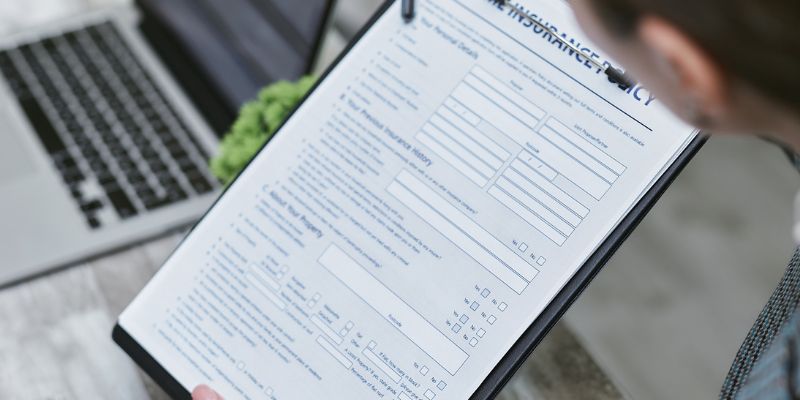Step-by-Step Guide to Analyzing Monetary Policy
May 18, 2024 By Susan Kelly
Monetary policy plays a crucial role in shaping a country's overall economy. It refers to the actions taken by a central bank to control the money supply and interest rates to achieve economic objectives. The importance of monetary policy in the economy must be recognized. It plays a vital role in controlling inflation, supporting economic growth, and influencing exchange rates. Explore the meaning of monetary policy and understand its types and tools.
Understanding Monetary policy
Monetary policy refers to the actions undertaken by a central bank, such as the Federal Reserve in the United States, to regulate money supply, interest rates, and economic credit availability. The primary goal of monetary policy is to achieve price stability, maximum employment, and sustainable economic growth.

Monetary policy examples
Adjusting interest rates: Central banks can raise or lower interest rates to influence borrowing and spending in the economy. When interest rates are low, borrowing becomes cheaper, encouraging businesses and consumers to take out loans and spend more. Conversely, borrowing becomes more expensive when high interest rates lead to reduced borrowing and spending.
Open market operations: Central banks can buy or sell government securities in the open market to influence the money supply. By buying securities, they inject money into the economy, increasing the money supply. Conversely, they withdraw cash from the economy by selling securities, reducing the money supply.
Reserve requirements: Central banks can require banks to hold a certain percentage of their deposits as reserves. By adjusting reserve requirements, central banks can control the amount of money that banks can lend out. Lowering reserve requirements allows banks to lend more money, increasing the money supply. Raising reserve requirements has the opposite effect, reducing the money supply.
Objectives of monetary policy
Control inflation: High inflation levels can erode the value of money and decrease consumers' purchasing power. By adjusting interest rates and other monetary tools, central banks can help keep inflation in check and maintain price stability.
Promote economic growth: Central banks can keep interest rates low to encourage borrowing and investment, increasing consumer spending and business activity. It can help stimulate economic growth and create jobs.
Maintaining full employment: By managing the money supply and interest rates, central banks can help create a stable economic environment conducive to job creation. When businesses are confident in the economy, they are more likely to hire new employees and expand their operations.
What are the 6 monetary tools?
Monetary policy tools are the instruments central banks use to control the money supply and achieve their economic goals.

There are six main monetary policy tools that central banks use to influence the economy:
1. Open market operations: These involve buying or selling government securities in the open market to control the money supply. When a central bank buys securities, it injects money into the economy, and when it sells securities, it removes money from the economy.
2. Reserve requirements: Central banks can also influence the money supply by changing banks' reserve requirements. By increasing the reserve requirement, central banks can reduce the amount of money that banks can lend out.
3. Discount rate: The discount rate is the interest rate that central banks charge commercial banks for borrowing funds. By changing the discount rate, central banks can encourage or discourage banks from borrowing and lending money.
4. Forward guidance: Central banks can also use forward guidance to signal their future monetary policy intentions to the public. By providing clear guidance on their future actions, central banks can influence market expectations and behavior.
5. Quantitative easing: Quantitative easing involves the central bank buying long-term securities to lower interest rates and increase the money supply. This tool is often used during economic crises to stimulate the economy.
6. Interest rates: Central banks can influence the money supply by changing the target interest rate. Raising or lowering interest rates can make borrowing more or less attractive, affecting consumer spending and investment.
Types of Monetary Policy
Monetary policy is a powerful tool central banks use to influence the economy by controlling the money supply and interest rates.
There are two main types of monetary policy: expansionary and contractionary.
1. Expansionary Monetary Policy
- It involves increasing the money supply and lowering interest rates to stimulate economic growth.
- They are used during times of economic downturn or recession to boost consumer spending and investment.
- It can lead to inflation if not carefully managed.
2. Contractionary Monetary Policy
- It involves decreasing the money supply and raising interest rates to slow economic growth.
- They are used to control inflation and prevent the economy from overheating.
- It can result in lower consumer spending and investment, leading to slower economic growth.
Each type of monetary policy is used to achieve specific economic goals. Expansionary policy urges economic growth, reduces unemployment, and increases consumer spending. Contractionary policy controls inflation, stabilizes prices, and prevents asset bubbles from forming.
Monetary Policy vs. Fiscal Policy
Monetary policy refers to the actions taken by central banks to control the money supply and interest rates and achieve specific economic goals, such as price stability and full employment.
On the other hand, fiscal policy refers to the government's use of spending and taxation to achieve economic objectives. Governments can use fiscal policy to stimulate economic growth, control inflation, and reduce unemployment.
The main difference between monetary and fiscal policies is that central banks control monetary policy, while governments control budgetary policy. Central banks are usually independent of political influence and focus on macroeconomic goals, while governments make fiscal policy decisions based on political considerations and priorities.
Takeaway
Central banks must carefully calibrate their monetary policy actions to effectively achieve their multiple objectives. By using a combination of these tools, central banks can support economic stability and foster sustainable economic growth.





